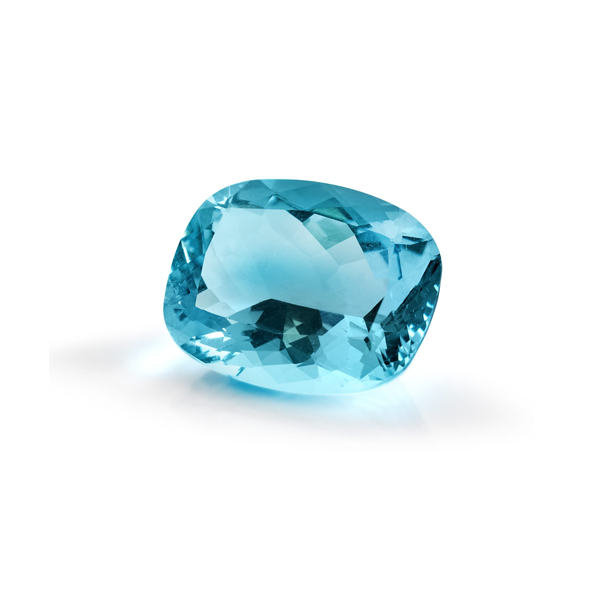Aquamarine is a member of the beryl family like the emerald.
Aquamarine, which takes its name from the Latin word “Aqua marina” meaning sea water, is a stone that can be clear, translucent, or opaque and usually comes in shades of blue to light green.
- Hardness: Aquamarine is relatively hard, scoring 7.50 to 8 on the Mohs scale.
This hardness makes it suitable for everyday wear in jewelry but requires care to avoid scratches and damage . - Origin: Aquamarine is found in several places around the world, including Brazil, Madagascar, Nigeria, Mozambique, Pakistan, and Afghanistan.
- Clarity: Aquamarines are usually very clear and have few inclusions, giving them a clear, bright appearance. Stones with excellent clarity are more valuable and desirable.
- Cut: Aquamarines are often cut into a variety of shapes, including oval, round, pear, octagonal, and cushion cuts. Cut can enhance the gems brilliance and color intensity.
- Transparency: Most aquamarines undergo heat treatment to enhance their color and remove yellow or brown tones, resulting in a more attractive blue hue. This treatment is widely accepted in the gemstone industry.
- Symbolism: Aquamarine is associated with tranquility, clarity, and calm. It is often considered a symbol of courage and communication, making it a popular choice for meaningful jewelry pieces.
- Value: The value of aquamarine depends on factors such as color intensity, clarity, cut quality, size, and origin. Intensely colored stones with excellent transparency and minimal inclusions fetch higher prices.
** Check prices based on shade and size. -








